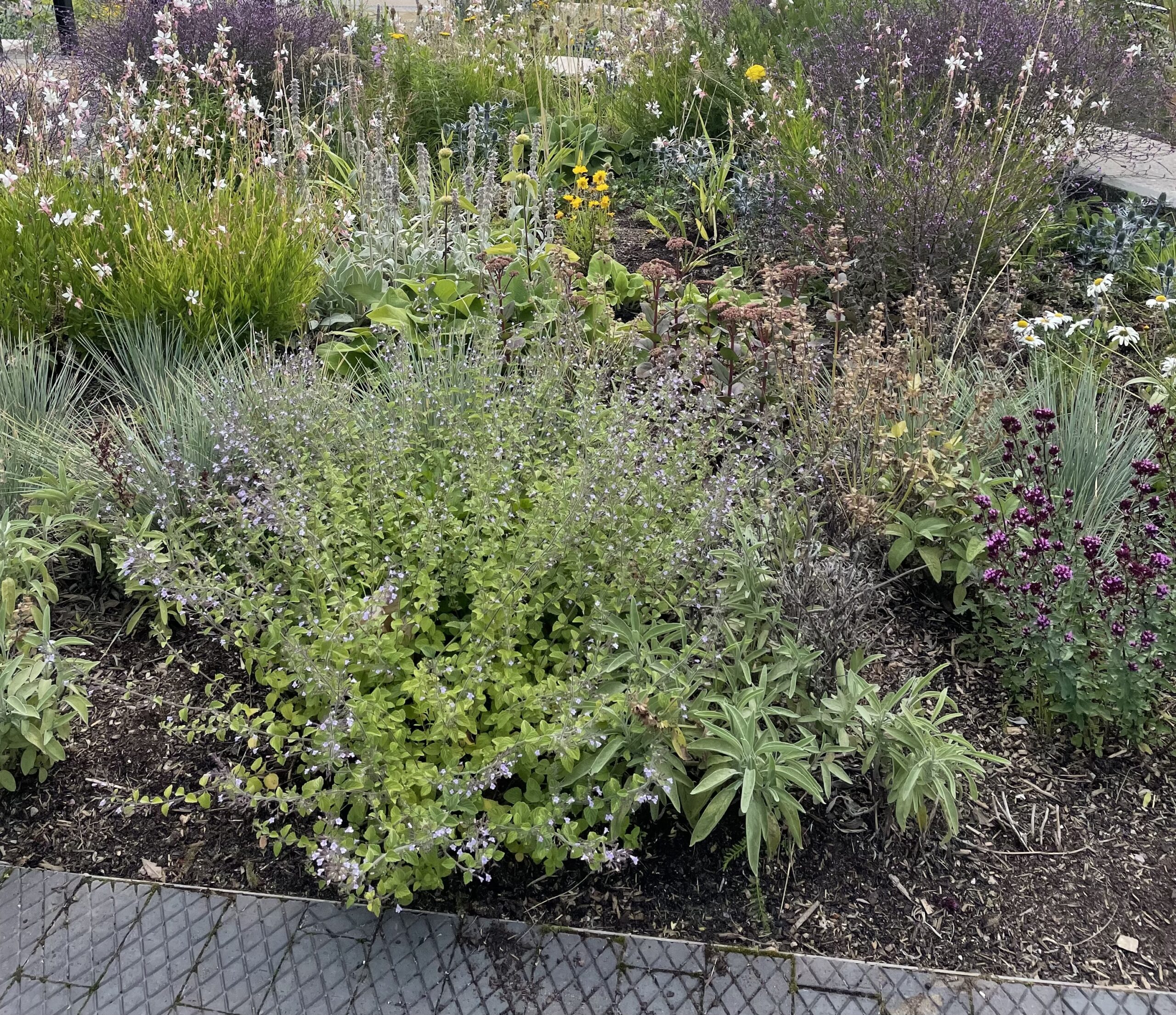*The information on this page has been provided by the project team which consists of the following partners.




Click here to return to the Unpave the Way homepage
If you’re using permeable paving (i.e., allows rainwater to drain through the surface) within your front garden then this does not require planning permission.
Note: Always investigate your garden’s ground conditions prior to designing your new driveway so you understand the options available to you. This should involve identifying your soil type and how permeable it is. If your garden is clay based, you can still incorporate sustainable drainage (SuDS) to capture and store surface water runoff within your front garden.
Tip: If you can’t lay new permeable paving within your front garden, then unpave some of your existing hardstanding instead, to make space for planting and infiltration of rainwater into the ground. You may only need wheel tracks to accommodate a car within your front garden.
Rain Garden
The multiple benefits
Plant list from the Unpave the Way rain garden
A shallow depression within the ground which receives surface water run-off from hard surfaces. They are planted with plants that can withstand waterlogging and periods of drought. Surface water fills the depression and then drains away either via infiltration to ground or via a surface water drainage outlet.
For more information please visit:

Image: Environment Agency

Image: Meristem Design
Collect rooftop surface water runoff and store it within the planter. They help to remove surface water from the drainage network by capturing and storing rainfall, allowing it to soak into the ground, or release it slowly into the drainage network.
For more information please visit:
Function by intercepting and retaining rainfall, reducing the speed and volume of surface water runoff.
Green roofs can be used on houses, garden sheds, bin stores, bike stores and carports.
For more information please visit:

Image: Environment Agency

Image: Little Terraced House
Function by storing surface water runoff from roofs so that it can be reused around the garden during dry weather.
Not only are rainwater butts easy to install, but they can save homeowners money by reusing the rainwater collected to water their gardens, as well as removing many litres of rainwater from the drains and sewers it otherwise would reach, helping to better manage flood risk in the community.
There are many sizes, styles, and even ‘smart’ water butts to choose from to suit any sized space and aesthetic, and you can get pumps and hose attachments for your water butt to save trips with your watering can.
For more detailed information on SuDS, please visit the following links:
Find out how to install a water butt in your garden here.

Image: Environment Agency
Trees provide multiple benefits and are important allies in climate change adaptation!

Image: Environment Agency
Amelanchier ‘Robin Hill’ Multi Stem
Key benefits:
For more info visit: Amelanchier × grandiflora ‘Robin Hill’|serviceberry ‘Robin Hill’/RHS Gardening
Betula utilis subsp. Jacquemontii (West Himalayan Birch)
Key benefits:
For more info visit: Betula utilis subsp. jacquemontii|West Himalayan birch/RHS Gardening
Carpinus betulus ‘Frans Fontaine’ (Hornbeam)
Key benefits:
For more info visit: Carpinus betulus ‘Frans Fontaine’|hornbeam ‘Frans Fontaine’/RHS Gardening
Crataegus laevigata (Midland hawthorn)
Key benefits:
For more info visit: Crataegus laevigata|Midland hawthorn/RHS Gardening
For help in finding the perfect tree for your garden visit: RHS advice & tips on garden & indoor plants | Plant finder & selector / RHS Gardening
Soils are vitally important for supporting biodiverse environments, capturing carbon from the atmosphere to store underground, and improving water quality and flood resilience.

Image: Environment Agency
Did you know? Soil is a vital biodiversity hotspot and is home to 90% of all fungi species.
The key to soil health is it being deeply aerated! Soil needs both air and water!
Soil compaction is where the soil particles become tightly packed together, with very small pores, which prevents rainwater from infiltrating through the soil. Indications of compacted soil are a muddy ground surface and/or rainwater ponding on the surface. This causes less infiltration of rainwater into the soil and more surface water runoff into sewers and rivers, increasing flood risk.
Furthermore, compacted soil limits root growth and decreases the plant’s ability to absorb nutrients and water.
Composting is a great way to reduce food and garden waste. Compost provides vital nutrients for soil, contributing to plant health. The more organic matter in soil the more water it can hold to slow the flow of rainwater and help reduce flooding.
Instructions on how to start your own compost: How to compost your waste | The Wildlife Trusts
More tips for composting: Composting / RHS Gardening
Biodegradable Mulch placed on the surface of the soil helps to improve soil structure and retain moisture, reducing the need for manual watering.
Instructions on how to use mulch: Mulches and mulching / RHS Gardening
*The information on this page has been provided by the Environment Agency.